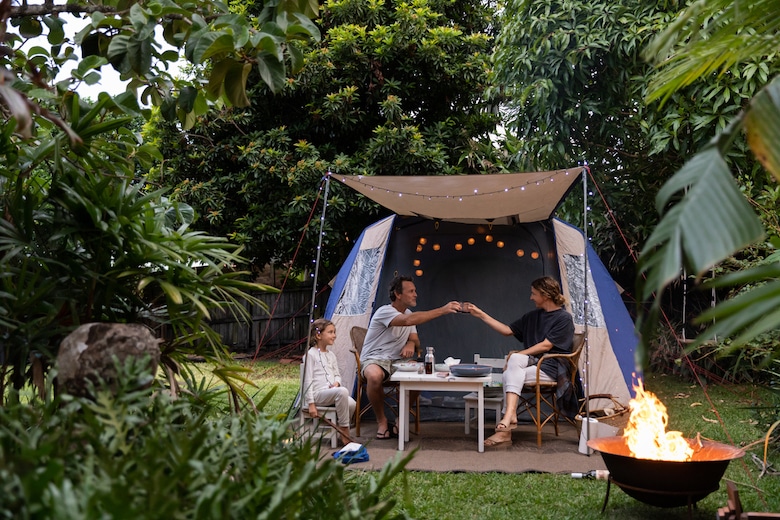
Summer is a time of heading out of the city or your hometown to spend time outdoors with friends, family and nature–but with the right tent, you can camp outdoors any time of the year, rain, hail or shine.
When it comes to camping equipment, one of the most important decisions you need to make is what kind of camping tent you buy. There are plenty of key factors to consider, from the shape and design to the durability to the ease of set up. Whether you’re a seasoned camper or heading out to a camping festival for the first time, we’ve got all the answers.
Types of Tents
From instant pop up tents to multi-room tents, there are plenty of options when it comes to buying a tent.
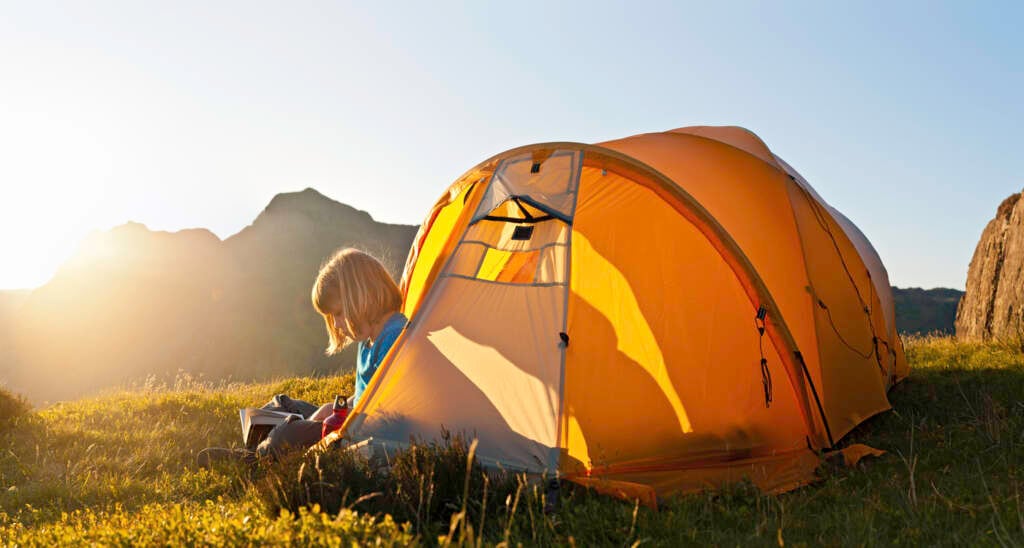
Pop Up Tent & Instant Tent
After a long drive, sometimes the last thing you want to do is set up a tent. Pop up tents make the process easy peasy. To set up a pop up tent, you don’t need poles. Pop up tents are also known as a 30 second tent since they’re so quick and easy to set up. It’s almost too good to be true!
Instant tents are especially useful for those who are new to camping and don’t want to spend too much time getting their tent up. Lightweight, easy to carry around and affordable, they’re perfect for camping, music festivals and the beach.
On the flip side, pop up tents tend to be on the cheaper side. They’re often less durable than traditional camping tents and are less resistant to extreme weather, including strong winds and heavy rain.
If you’re a casual camper and expecting tame weather, a pop up tent is a great option for you.
Advantages
- Easy to set up
- Lightweight
- Affordable
- Compact
- Versatile
Disadvantages
- Less durable than traditional tents
- Not as resistant to extreme weather conditions
Dome Tent
Characterised by their rounded shape, dome tents are one of the most popular and recognisable camping tents available. Known for their stability, durability and ease of setup, dome tents make a great option for camping.
They’re not as quick and easy to set up as pop-up tents, but dome tents are fairly simple to set up.
Advantages
- Wind resistant
- Quick and easy assembly
- Rain cover for protection
- Mesh windows for ventilation
- Available in a variety of sizes
- Lightweight
- Suitable for most camping occasions
Disadvantages
- Not enough room to move around or stand
- Not suitable for extreme weather conditions
Glamping Tent
Looking for a little luxury? Glamping tents combine the best of both worlds–camping and comfort. Glamping tents are designed in a pyramid-like shape and provide a more luxurious, comfortable camping experience. Usually larger in size compared to other types of tents, glamping tents often come with amenities like electricity, heating and air conditioning. They offer a unique, relaxing camping experience, especially if you’re not too particularly comfortable about camping outdoors. On the flip side, glamping tents tend to be more expensive than traditional tents.
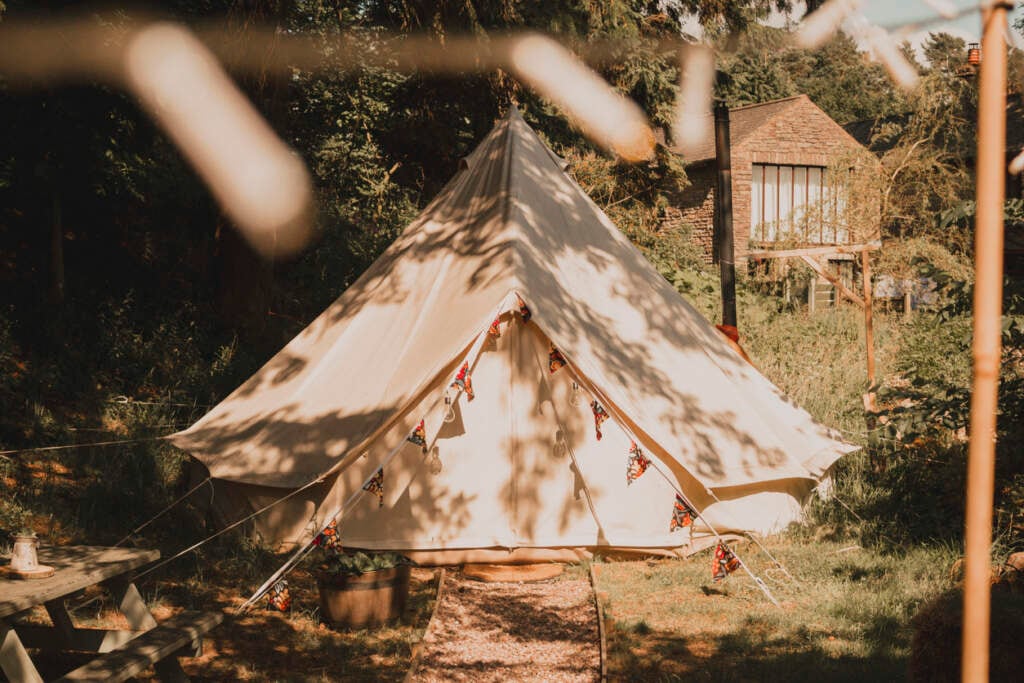
Advantages
- Simple to set up
- Comfortable
- Sometimes come with additional features
- Larger in size than most other tents
- More ventilation due to their height and pyramid-like shape
Disadvantages
- Due to their triangular shape, there are no vertical walls which can limit space
- Usually don’t have a built-in groundsheet
- Not designed for extreme weather
- More expensive than traditional tents
Geodesic Tent
Innovative and unique, geodesic tents generally offer plenty of advantages over other tent designs. Usually, geodesic tents are more durable and stable and are able to withstand more extreme weather conditions due to their design. More often than not, geodesic tents are made from waterproof and UV-resistant materials, offering longevity and durability. If you’re an avid and frequent camper, geodesic tents are a great option for an enjoyable camping experience.
Advantages
- Waterproof and UV-resistant
- Durable and long-lasting
- Suitable for extreme weather conditions
- Stable and strong
Disadvantages
- Less ventilation than in other tents
- Heavier and more difficult to transport
- Complex to set up
- More expensive than dome and instant tents
Tunnel Tent
Tunnel tents feature a long, narrow tunnel-like structure and need poles to create a strong and sturdy frame. These kinds of tents can withstand strong winds and extreme weather and also offer a fair amount of interior space to move around in. Generally, tunnel tents are simple to set up, making them suitable for beginners. Often, tunnel tents have pretty decent ventilation, featuring large mesh windows and vents for plenty of fresh air to circulate.
On the other hand, tunnel tents tend to be less suitable than dome tents in extreme weather. They’re also heavier and bulkier than pop up and dome tents.
Advantages
- Suitable for families and groups
- Stable and wind-resistant
- Simple structure
- Better ventilation
- Lightweight
Disadvantages
- Limited room to stand up
- Not much privacy
- May not withstand heavy rain
- Less durable than other tents due to its lightweight design
A-Frame or Ridge Tent
Sturdy and stable, A-frame tents are a camping favourite. Easy to set up and down, these tents are a great option for campers on a relaxing trip looking to set up their tent without hassle. Due to their shape, A-frame tents offer more headroom and are typically smaller and more compact than other tents. Designed for stability, A-frame tents can withstand strong winds and rain.
Ultimately, A-frame tents are quite small, leaving less interior space than tunnel tents or geodesic tents. Typically, they have less ventilation too.
Advantages
- Sturdy and stable, when set up correctly
- Simple structure
- Easy to set up
- Suitable for heavy rain
Disadvantage
- Lack of headroom
- Heavy
- Can be difficult to set up correctly
Swag Tent
Swags are designed for camping, bushwalking and hiking. With their lightweight design, easy set-up, durability, compact size and portability, they are the ideal tent to take with you on a trip. Often, hikers use swag tents in place of traditional tents as they are both lightweight and can withstand harsh weather conditions.
Usually, swags are made for a single person but double swags are available, too. have room for two. They feature a built-in mattress so you don’t need to carry one with you and a mosquito net for protection from pesky bugs. A camping swag tent is often equipped with straps to take around with you and has decent ventilation for fresh air.
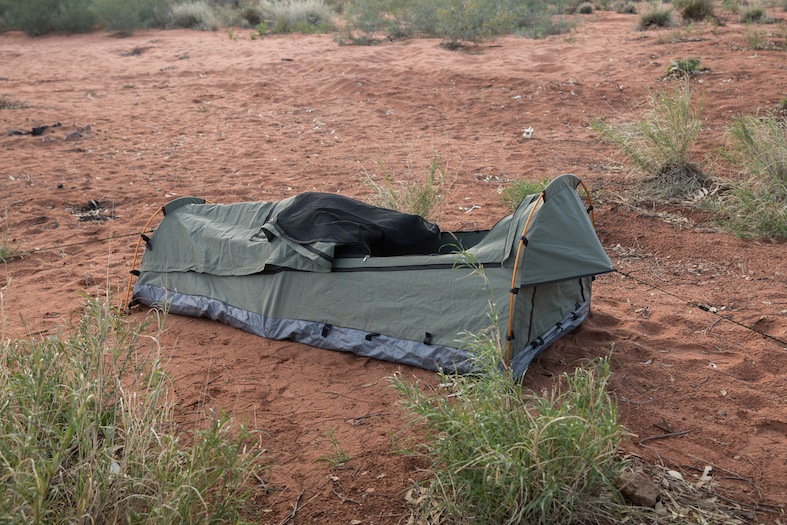
Advantages
- Weather resistant
- Durable
- Lightweight
- Easy to set up
- Compact and portable
- Built-in mattress
- Ventilation
Disadvantages
What to Consider
Before you buy a tent, there are a few key factors to consider, like the size and capacity of the tent, its durability against harsh weather and how quick and easy it is to set up.
We also recommend you test out your tent before going away so you can make any adjustments. Stay prepared and pack spare tent accessories, like a mallet and tent pegs with you.
Size & Capacity
When buying a tent, it’s important to consider how many people will be sleeping in the tent. You can buy most designs in a variety of sizes, from a 2 person tent to a 6 person tent. Also think about how much space you’ll need for your bags, gear and other essentials, eg. how large is your mattress? Do you want to be able to stand up to get dressed in your tent?
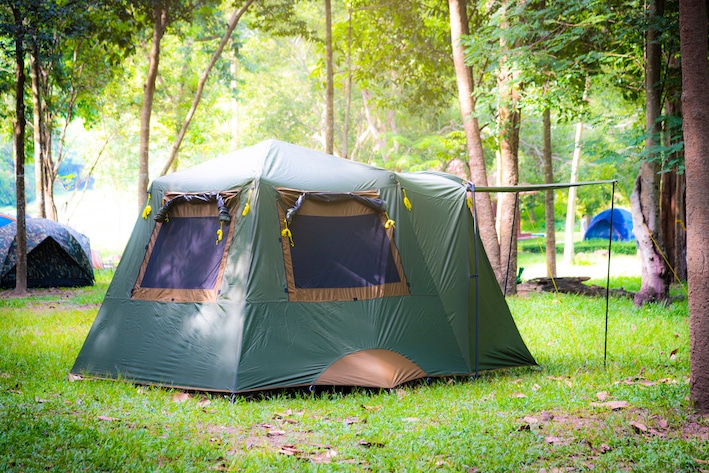
Weather Conditions
Tents are designed to withstand different kinds of weather conditions, so make sure to choose one that is suitable for your camping trip. For summer, look for a tent with great ventilation, like a tunnel tent, dome tent or pop up tent. If you’re expecting strong winds or heavy wind, consider a geodesic tent, A-frame tent or swag. Look for tents with an attached awning for shade and cover.
Ease of Set Up
The time and complexity of set up can vary greatly between tents, so consider what you’re after. If you’re camping alone, it’s easiest to set up a pop up tent or dome tent.
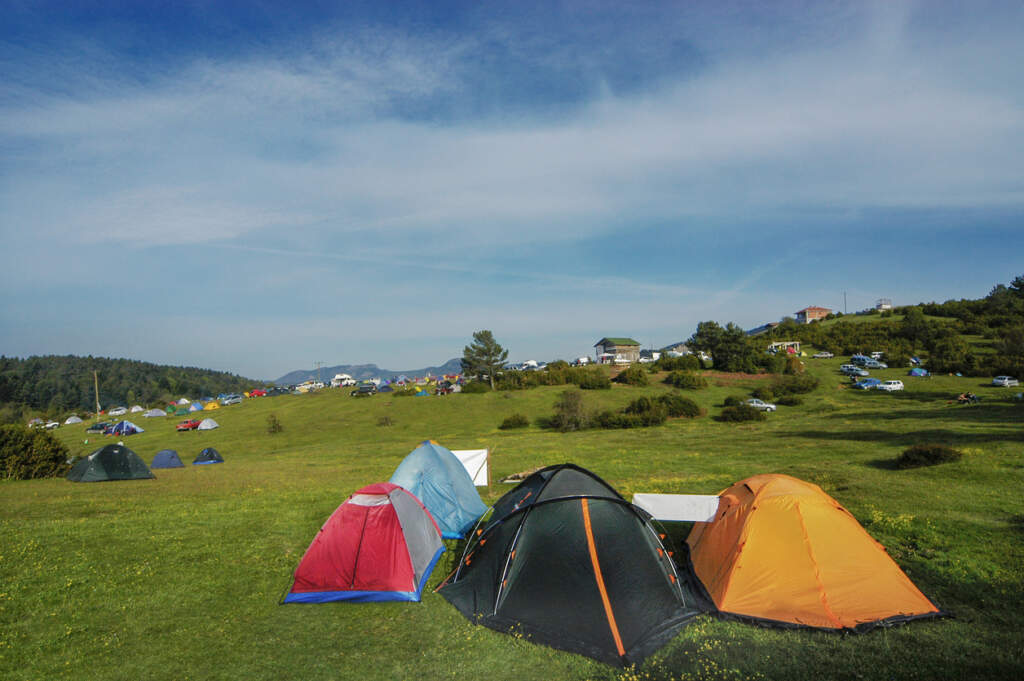
Durability
Consider how frequently you are planning on using your tent. Are you an avid camper or planning on using your tent for a 3-day festival once a year? Is longevity an important factor? If durability is a concern, look for tents made of high-quality, waterproof and UV-resistant materials.
Material and Breathability
It’s important that tents have sufficient and proper ventilation to keep them cool and comfortable. Look for tents with mesh windows and vents to help with airflow, especially if you’re camping during summer.
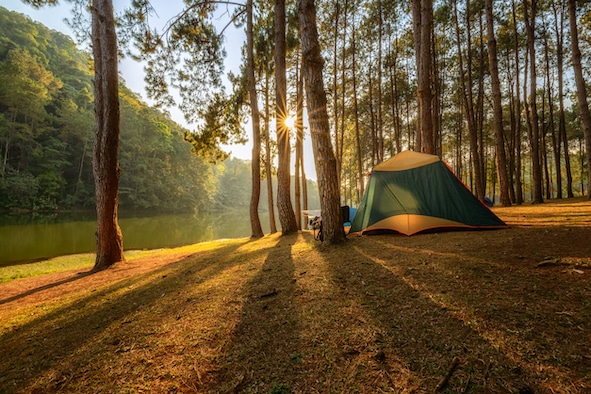
Weight and Portability
If you’re planning on hiking or travelling around, it’s important to consider the weight and portability of the tent. You’ll need a camping tent that is lightweight and compact, but not lacking in quality.
Budget
Tents vary in price. Set a budget and find a tent that will be long-lasting so that you can get the best value for money. Often, higher prices equate to higher quality and durability, however, this is not always the case.
Which Tent is Best for You?
It’s a good idea to buy a tent based on your needs, not which tent is best on the market.
Family Camping
If you’re going on a family trip, look for a multi-room tent. These have walls for privacy and plenty of space inside so you can keep an eye on your kids.
Hiking
Going on a hike or solo trip? You’ll need a tent that is lightweight, durable, and easy to set up alone. Consider investing in a swag tent. Not only are they easy to travel with, but they’re the best lightweight tent that will withstand unpredictable and harsh weather conditions.
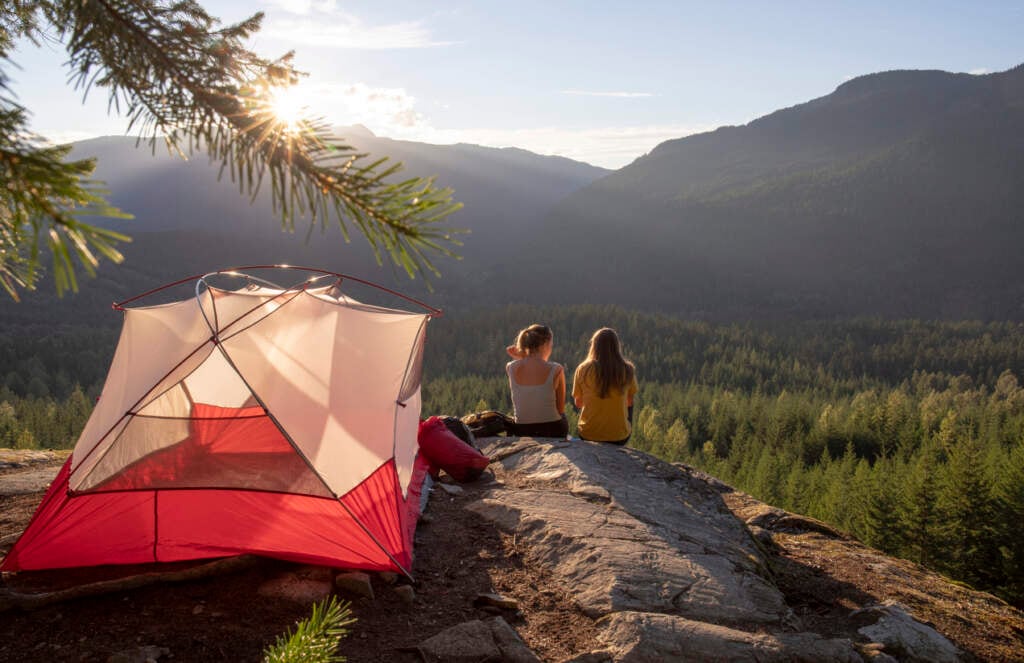
Casual Camping
If you’re a casual camper and don’t plan on camping frequently, your best bet is to buy a dome tent or pop up tent. Both dome and pop up tents are inexpensive and simple to set up in minutes. With different sizes available, you’re sure to find one that suits your needs.
Harsh Weather Conditions
If you expect harsh weather conditions like heavy rain or strong wind, go with a swag tent, A-frame tent or geodesic tent. Which you choose depends on your other needs, whether it be space, ventilation or a lightweight design.


